Egypt Part 2: Cairo’s Pyramids, Mummies, and Koshary Galore!
My month-long expedition through Egypt, Jordan, Italy, and Malta had barely begun, and I’d already seen more than I ever dared to dream. Cairo had knocked my socks off on the first day of the trip, and my second full day there promised to be one for the books. On the itinerary? Iconic ancient wonders, delectable local cuisine, and archaeological treasures that felt like stepping into a dream.
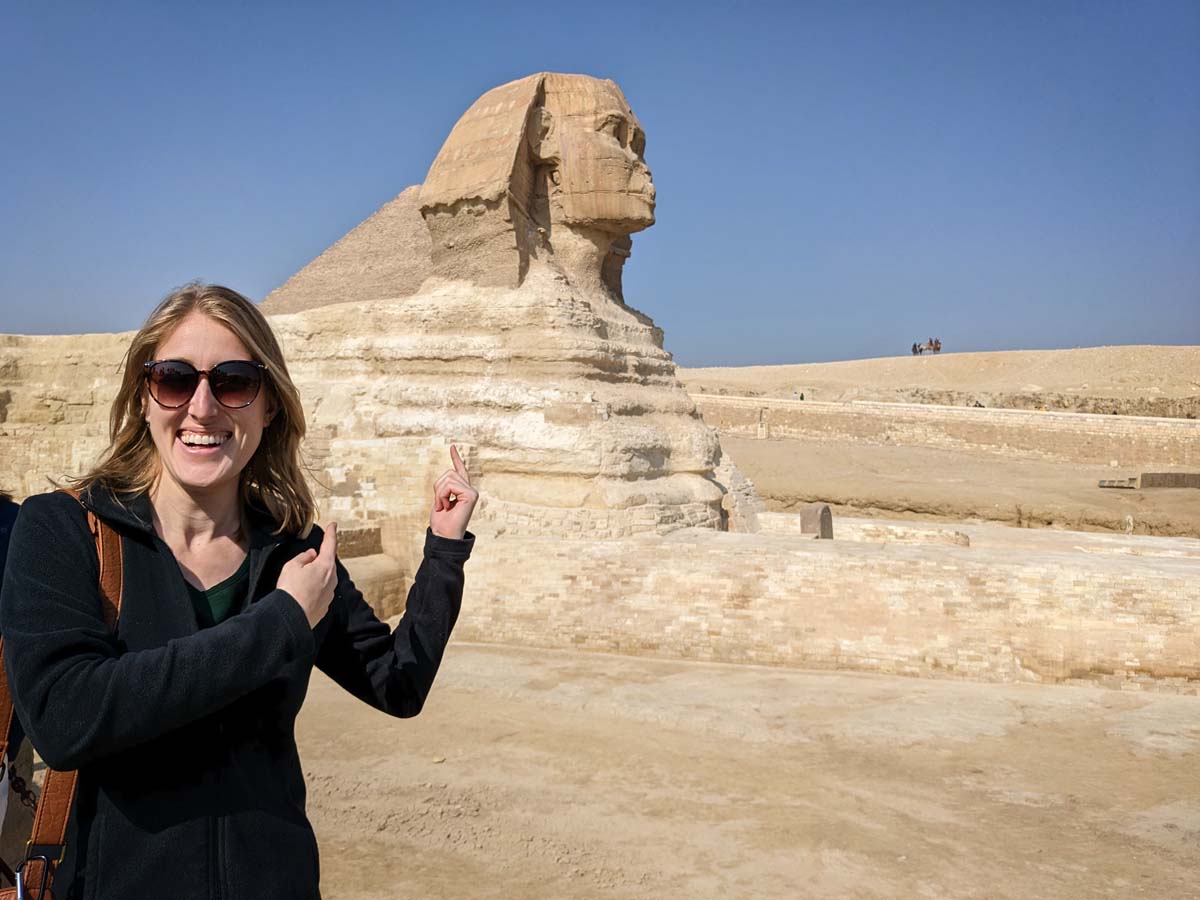
This guy!
Before I continue, for background on the unexpected series of events that led to my grand Middle Eastern and European adventure, here’s that story. And if you missed my previous post about day one in Cairo, check that out here.
I chose to explore Egypt via an Intrepid Travel tour, and this marked our first full day as a group. We began with an elaborate breakfast buffet at our hotel before heading out to Egypt’s most illustrious attraction: the Pyramids of Giza! Navigating the bustling entrance to the pyramid complex underscored the benefits of seeing Egypt on an organized tour, as our guide Mohamed skillfully navigated us past throngs of souvenir vendors and tour hawkers, leading us straight to our first stop: the Great Pyramid of Giza, also known as the Pyramid of Khufu.
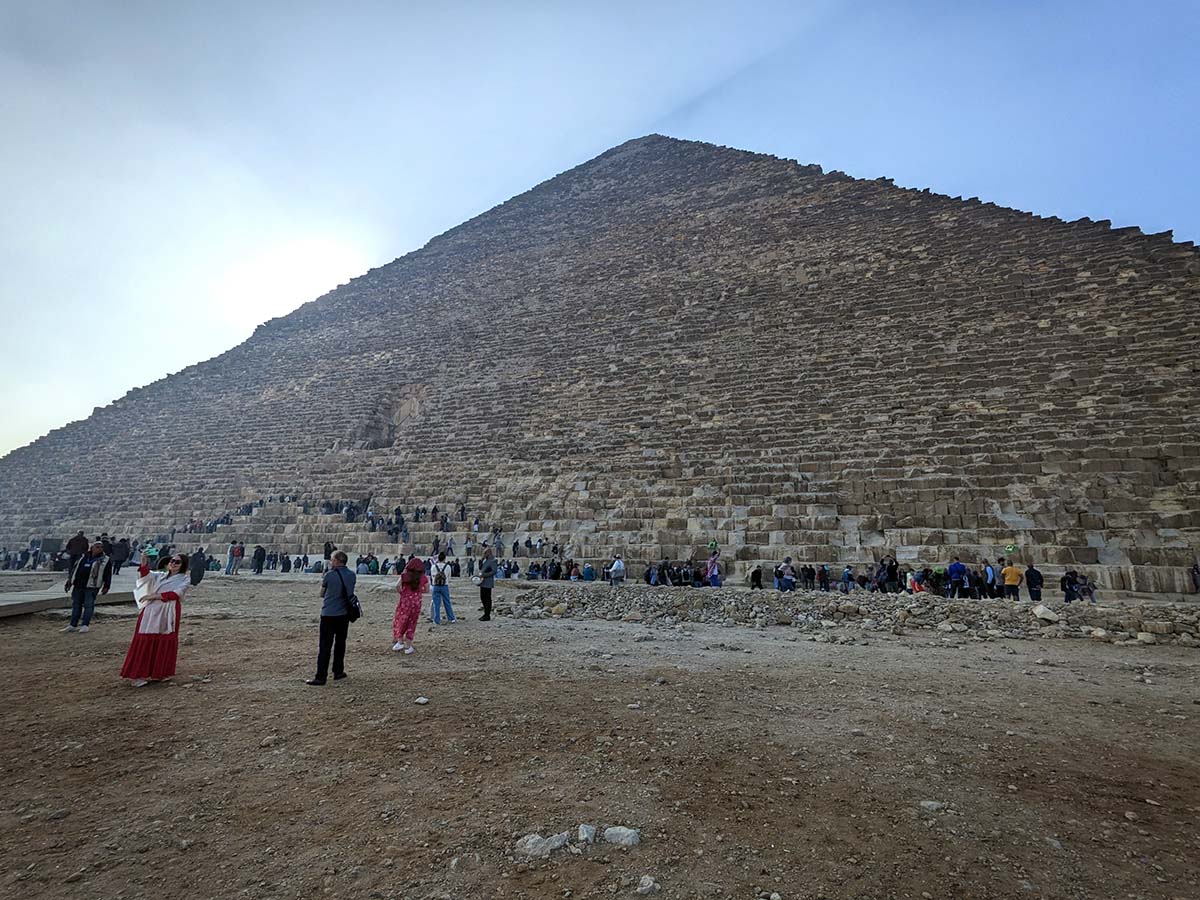
No one tells you just how dang massive these things are
As we approached the pyramid, Mohamed gave us the run-down on its history, a history I admit I barely registered as I gawked up at the stone behemoth looming over us. But to use Wikipedia to fill in some gaps: this tomb of the pharaoh Khufu (also known as Cheops), dates all the way back to 2600 BC and was the tallest human-made structure in the world for more than 38 centuries. It’s one of the Seven Wonders of the Ancient World and the only one still standing today.
Journey to the Center of the Pyramid
Entering the pyramid was optional, and half our tour group decided to remain outside. We had been warned that the journey into the burial chamber wouldn’t be easy, but I couldn’t resist the chance to see the inside of an ancient pyramid. Somehow, playing video poker in the Las Vegas Luxor just isn’t the same.
The initial passageways into the pyramid’s core were manageable: stuffy and packed with tourists, but at least we could walk upright. As we ventured inward, though, we scaled a steep ramp that required bending 90 degrees at the waist. Temperatures began rising, and, with only one narrow way in and out, it was a tight squeeze past oncoming traffic. Despite a brief respite in the next segment that allowed us to stand upright, with each step further, the air thickened and temperatures rose.
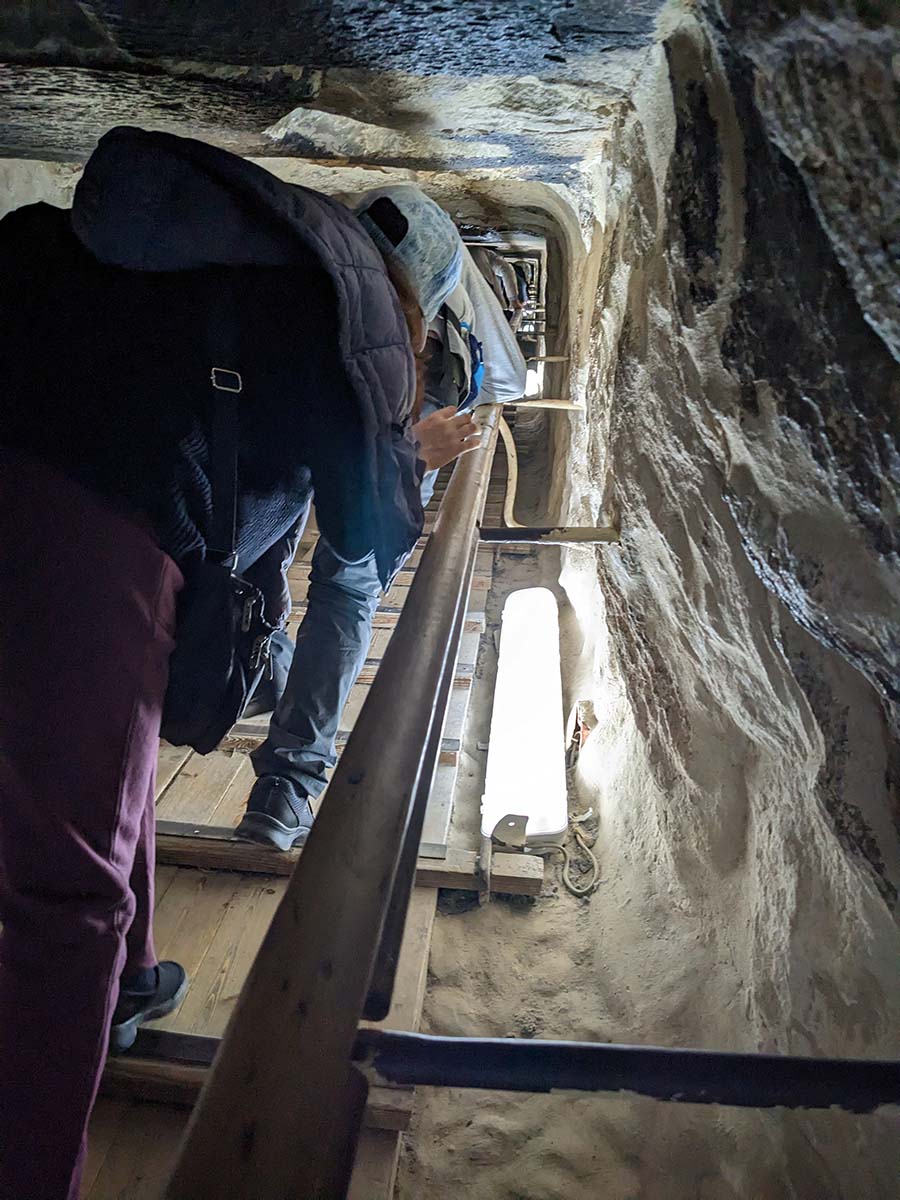
The pyramid’s steep ascent
Adding to the challenge, I was in Cairo during a COVID surge, so I chose to wear an N95 mask that made breathing even more difficult. (No regrets there, as I doubt that air has fully been recycled since 2600 BC. And forget viruses; who wants to smell musty dead pharaoh air anyway?) All I can say is thank the Egyptian gods I visited Cairo in January, when outside temperatures were in the high 60s Fahrenheit. Even with mild weather, I would guess the temperature inside the pyramid approached 100 degrees, and the strenuous ascent would test even the fittest athletes. I have no idea how visitors in the summer avoid collapsing from the heat.
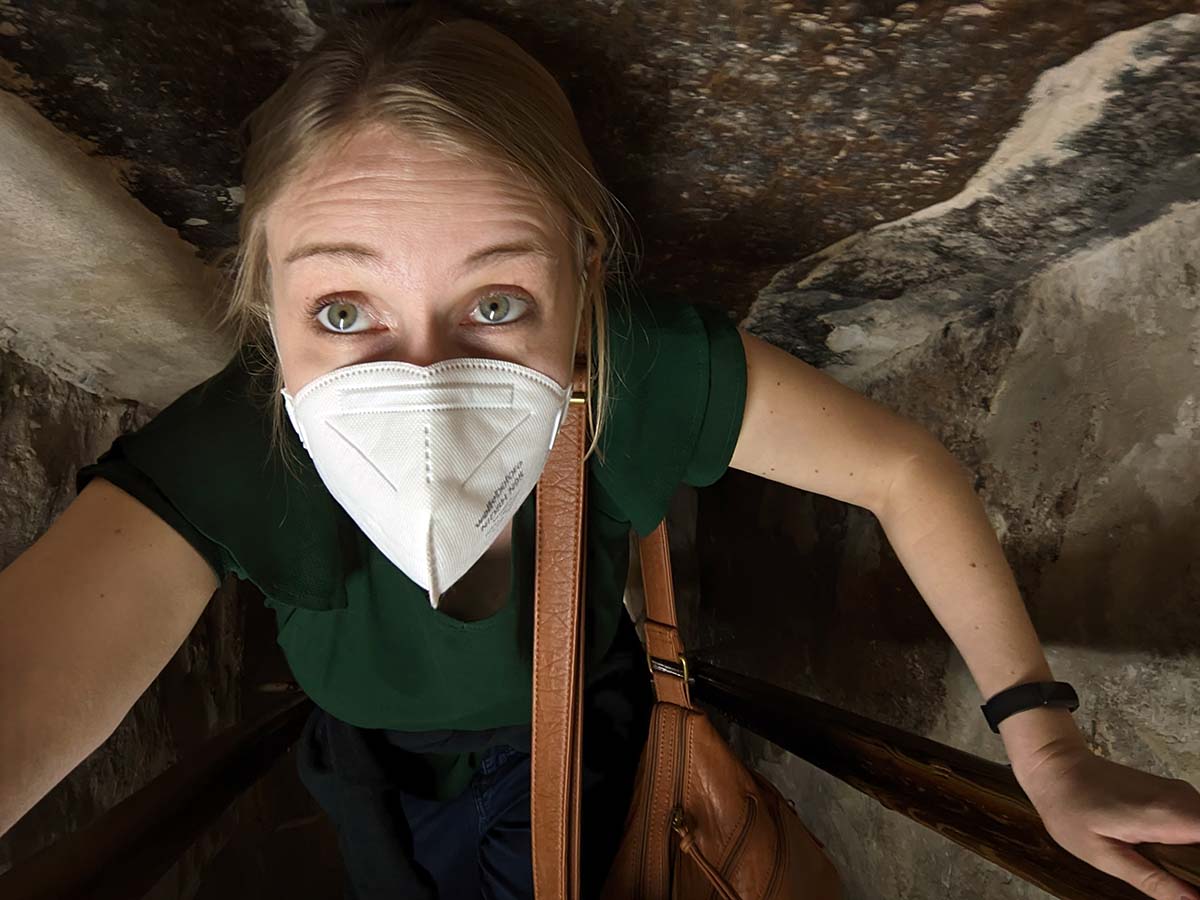
Mercifully not keeled over
After tackling this formidable climb, we finally reached Khufu’s burial chamber! And it was, well…underwhelming. Khufu and all his valuables were removed from the pyramid ages ago, leaving only a grey, brick cube containing an austere stone sarcophagus.
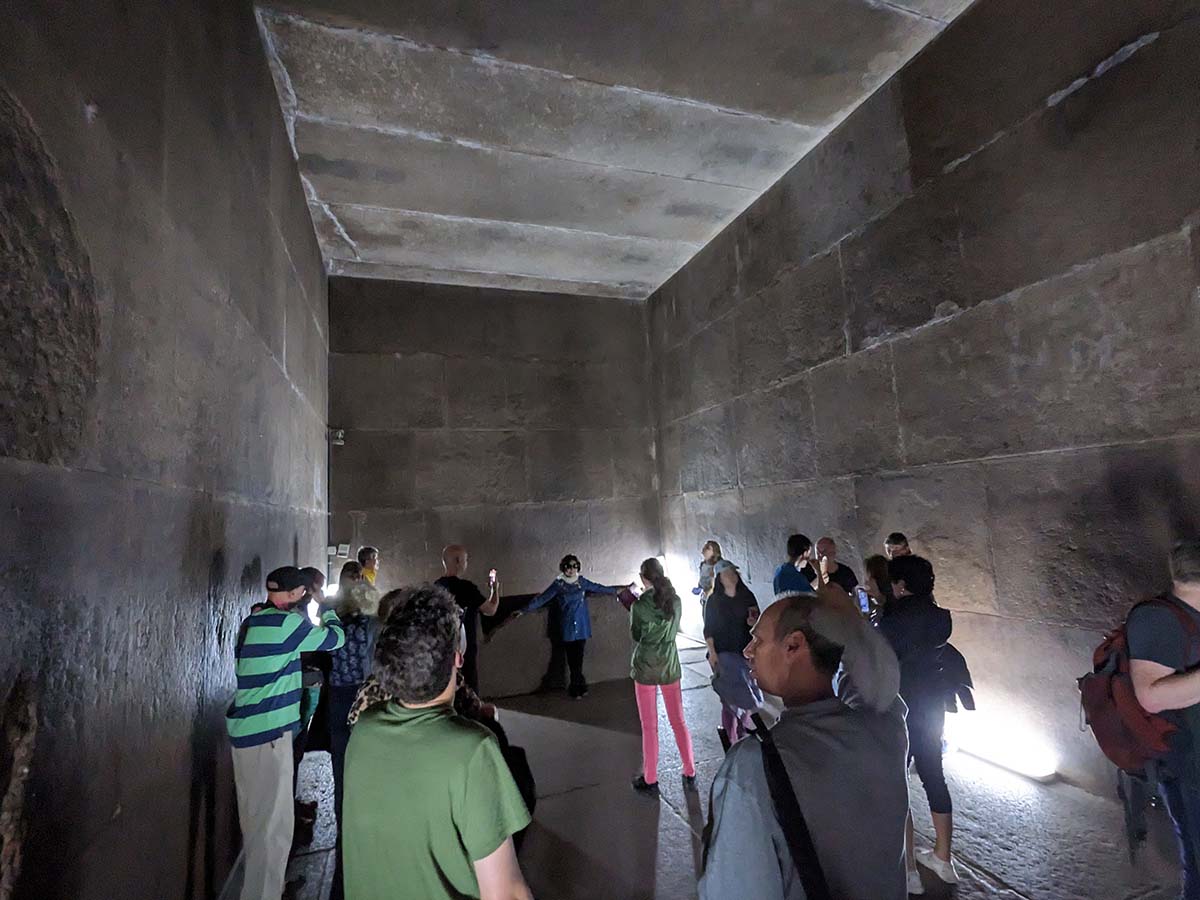
Inside the burial chamber. I’d be Khu-furious to be laid here for eternity
Despite my less-than-effusive description, I wouldn’t trade the experience for anything. Just knowing you’re standing in the middle of the Great Pyramid of Giza is remarkable, and the challenge of getting there made it all the more rewarding. It’s wild to think I’ve been seeing images and reading histories of these pyramids all my life, and there I was, standing smack dab in the heart of the most famous one of all.
Back in the world of fresh air and tolerable temperatures, we had a few minutes to grab photos of the pyramid’s exterior before hopping in our tour bus to a viewpoint overlooking the entire complex.
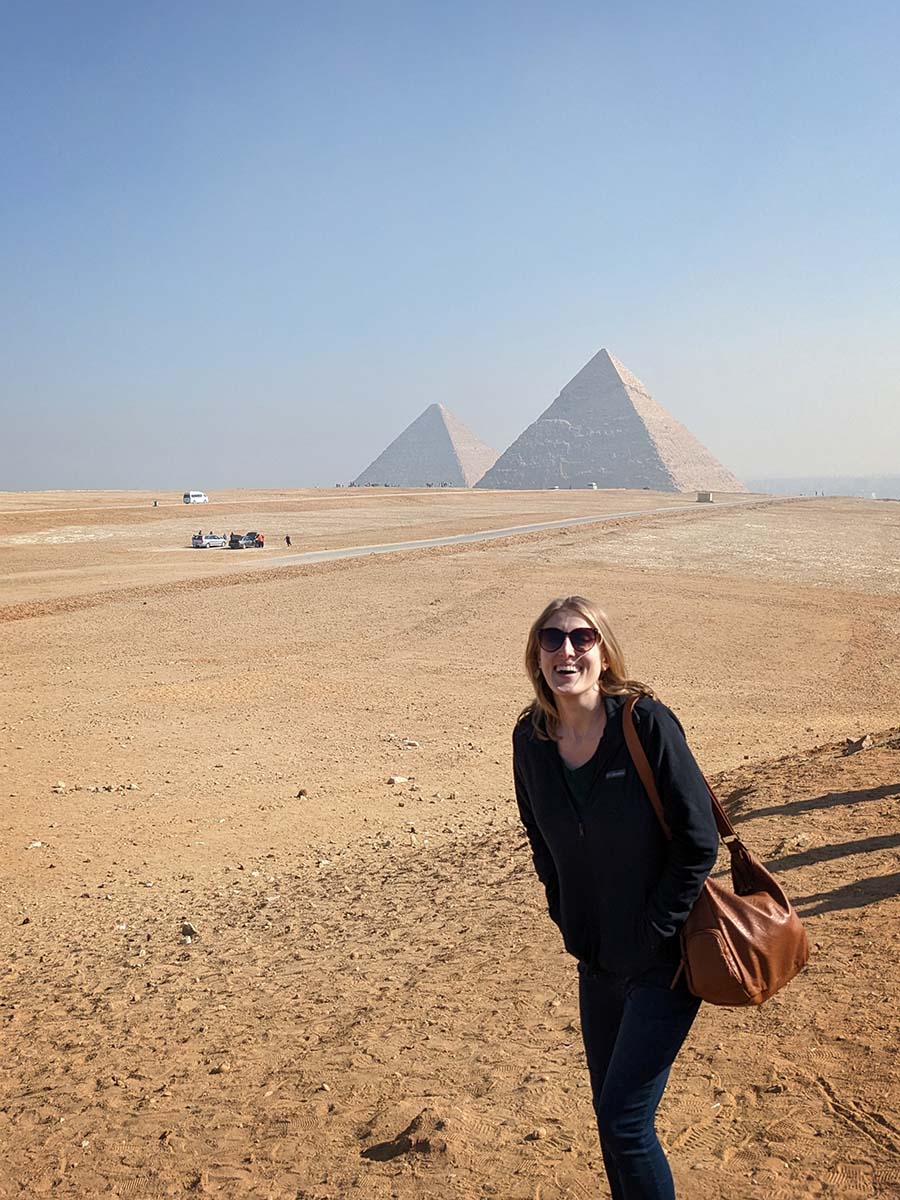
Hey, look! It’s the pyramids!
What Rough Beast
Instagram modeling complete, our next stop was the Great Sphinx, which sits just hundreds of feet away from the pyramids. Built in the 2500s BC, the Sphinx was intended to represent the pharaoh Khafre. I don’t think there’s a soul in the world who doesn’t find this statue instantly recognizable, so getting up close and personal with it was pretty unbelievable. “Personal” may be a stretch, though, as I had to fight hundreds of tourists just to get a clear glimpse of this famous man-lion. But, hey, no one goes to Cairo for the peace and quiet.
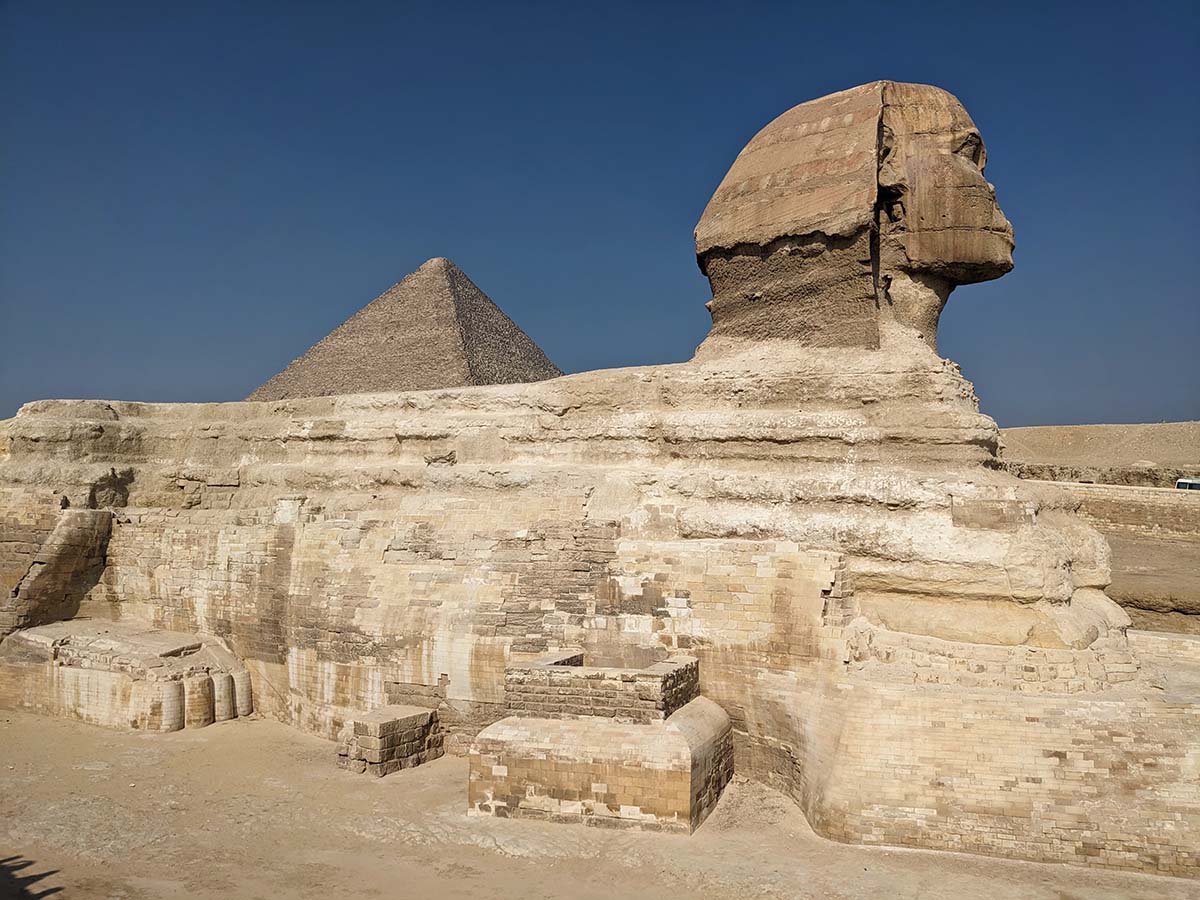
Weep, little lion man
After viewing the Sphinx, we had some time to wander around the area, and I particularly delighted in observing the dozens of camels that are brought to the Pyramids for rides and photo ops. I chose not to fork out the money to pose with these dromedaries, saving that experience for the Wadi Rum, Jordan portion of my trip, where camels have better employee benefits.
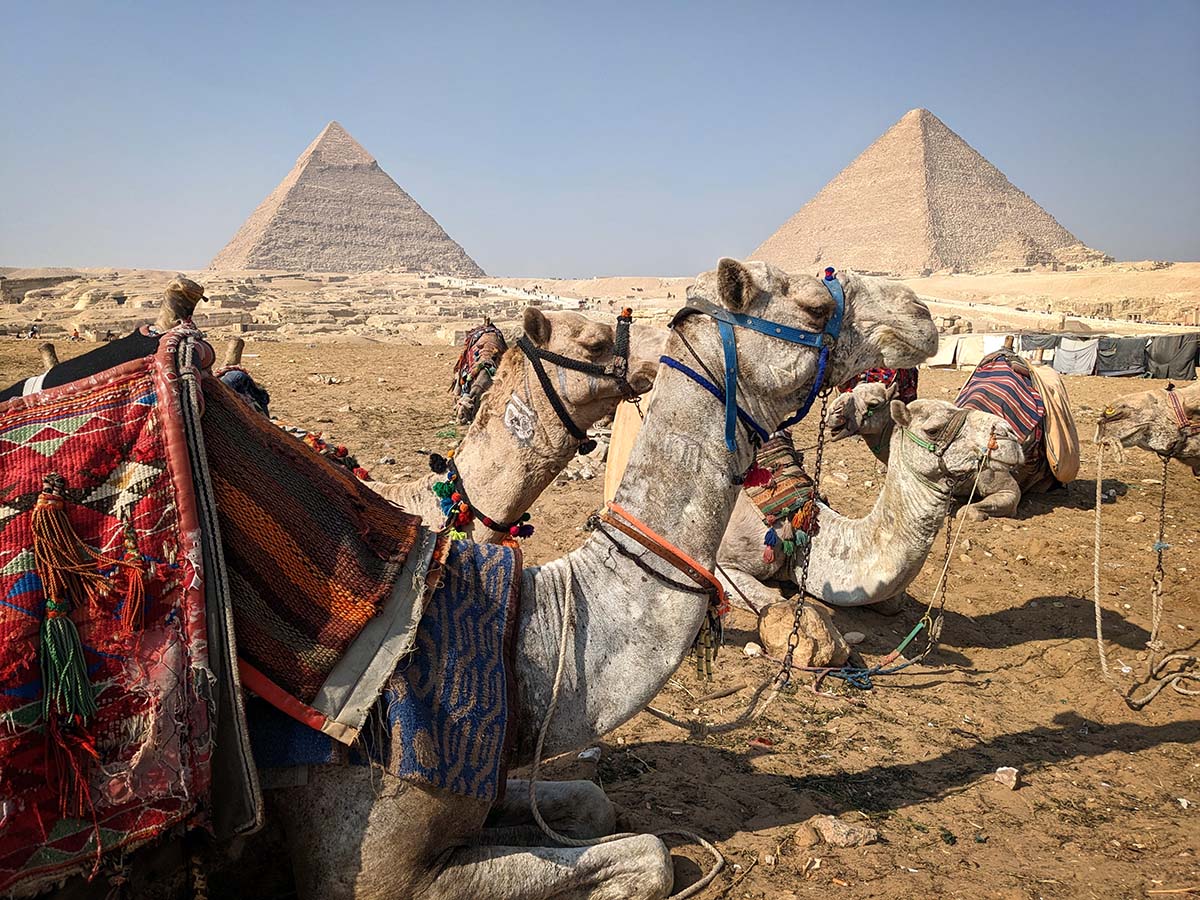
I wonder if they tire of this view
Keeping it Koshary
Next up: lunch! And what better choice for our first group lunch than Egypt’s national dish, koshary? This popular street food is a mish-mash of delicious carbs: rice, noodles, pasta, lentils, and chickpeas, all topped with vinegar, tomato sauce, and fried onions. We dined in a small, hole-in-the-wall spot not far from the pyramids, a place that, despite its proximity to a tourist attraction, felt like a real locals’ haunt. Most of my group absolutely hated this dish, and a few tolerated it, but I loved it. I mean, sure, it’s a lot of starches, but I found it hearty and delicious, and I was happy to be trying a local dish—especially after the previous day’s meals at Pizza Hut and a hotel restaurant.
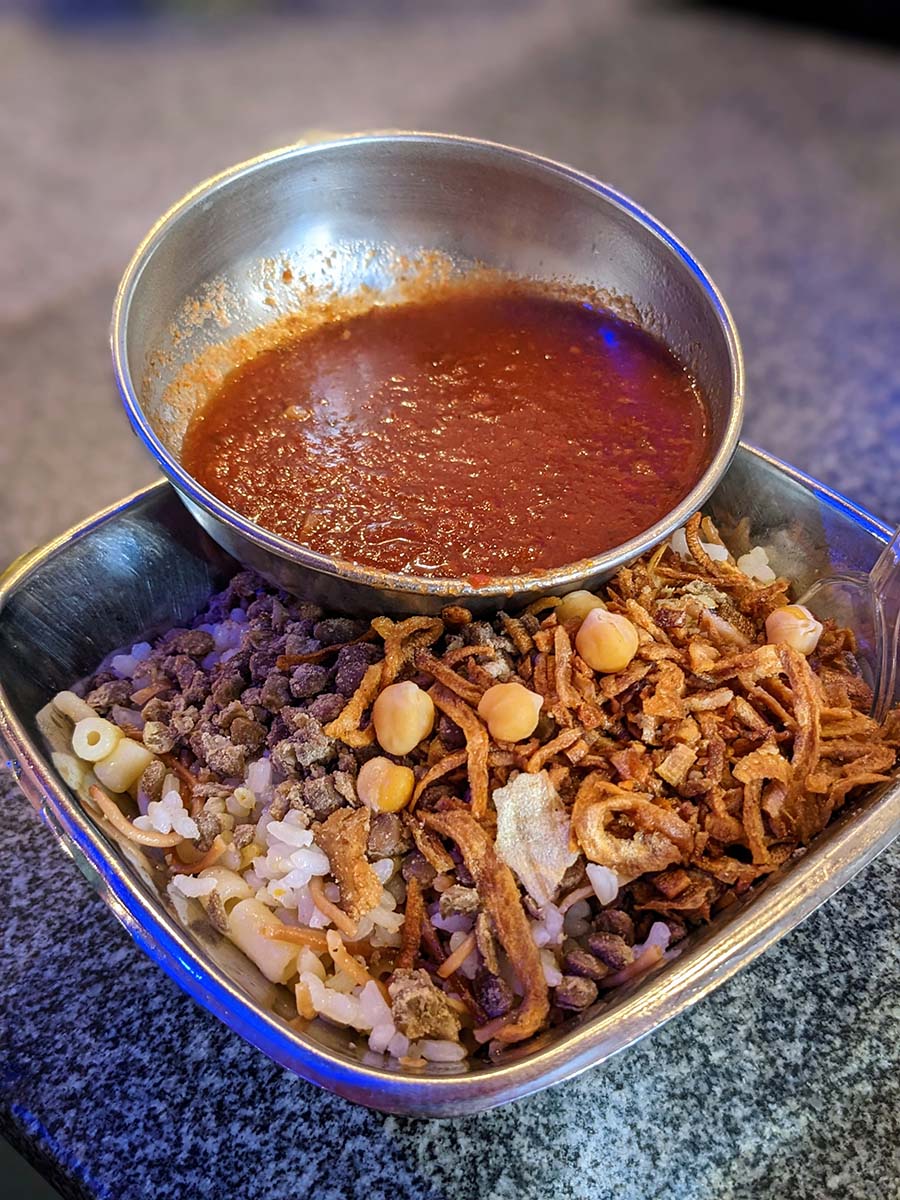
Currently craving koshary
Papyrus R Us
In my experience with guided tours, I’ve found there’s one thing most have in common, no matter where in the world you are: the obligatory stop at some sort of “local goods” shop (likely mass-produced in a far-off country). Usually, the proprietor offers you a beverage and walks you through a demonstration of how they “handcraft” their goods before giving you way too much time to wander the shop and purchase overpriced souvenirs that the tour company clearly gets a kickback from. I don’t relish these visits, but, eh, I can’t really complain about seeing new things when traveling.
Anyway, this tour’s version of that scheme was a papyrus shop. While hearing how papyrus is made was mildly interesting (don’t ask me to recount the process), the extensive free time time we had for shopping was uncomfortable. Salespeople breathed down our necks (almost literally) and we couldn’t so much as glance at a piece of papyrus art without being pressured to spend hundreds of dollars on a glow-in-the-dark print of the Virgin Mary.
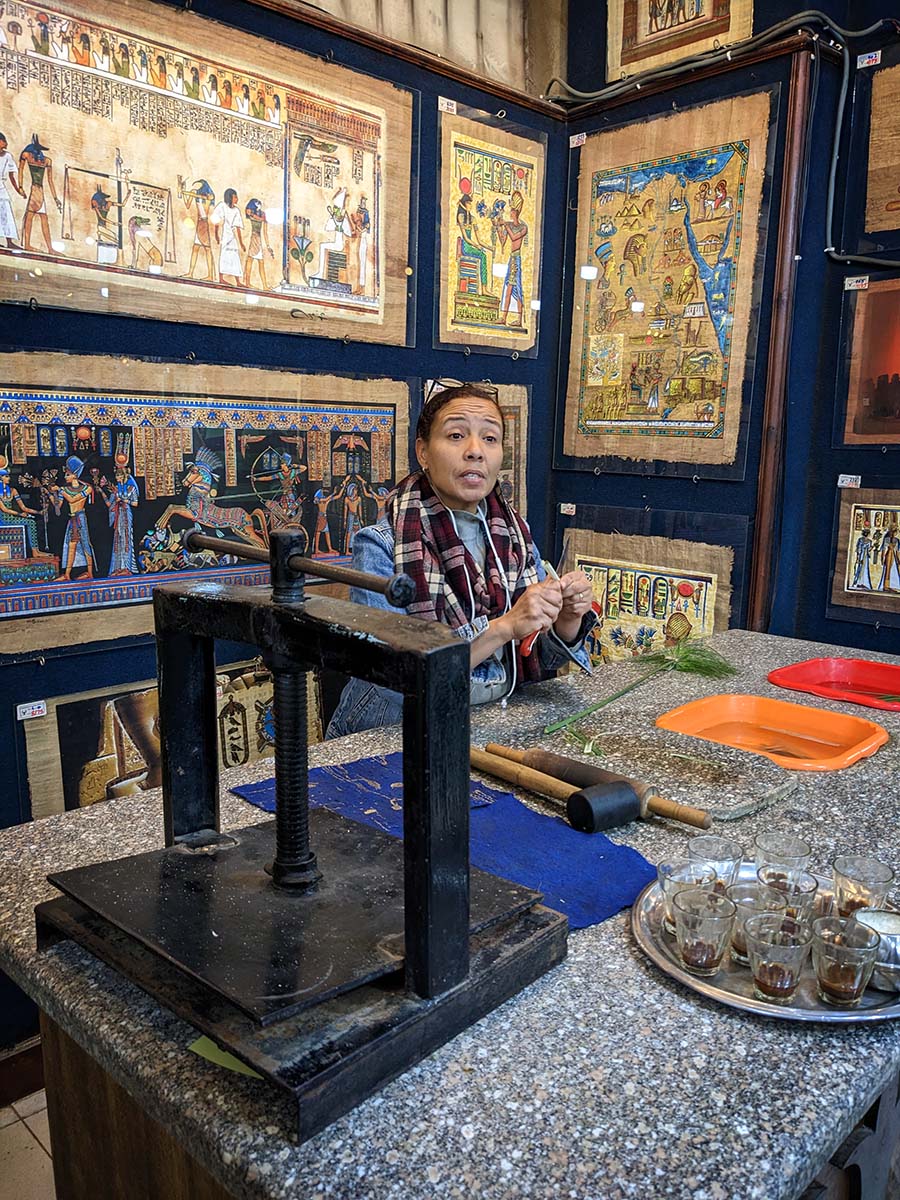
Papyrus demonstration. You’ll just have to take my word for the black light Biblical art, since I was terrified a photo would attract even more attention from the salespeople.
Mum’s the Word
That stop out of the way, we headed to the Egyptian Museum. This popular archaeology museum is located in Tahrir Square, which was made famous to non-Egyptians as the center of the 2011 Egyptian revolution. The museum itself is the largest museum in Africa and contains the world’s most extensive collection of Egyptian antiquities: over 120,000 items!
After Mohamed introduced to the museum, we had free time to explore its many halls of mummies, sarcophagi, statues, papyrus relics, hieroglyphic carvings, and more. Most notably, the museum houses the treasures of King Tut’s tomb, including his gold burial mask, undoubtedly one of the most recognizable symbols of ancient Egypt.
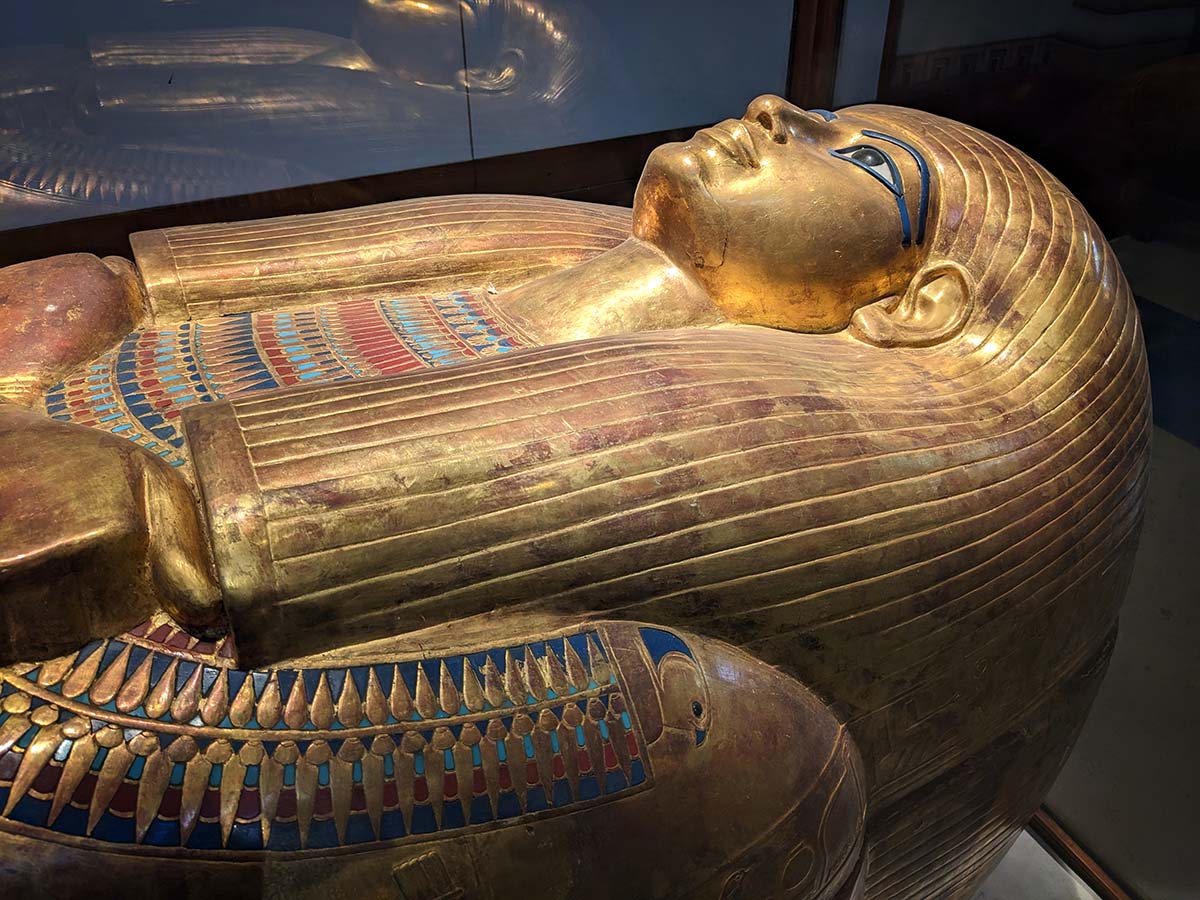
Photography is forbidden in the King Tut exhibit, but this guy had a similar vibe
It was a fascinating museum, particularly because ancient Egyptian iconography is deeply familiar to most of us. Whether it’s through elementary school history books, Halloween costumes, action movies, or theme parks, we’ve been seeing reproductions of these artifacts all our lives, so it’s pretty surreal to see them in person.
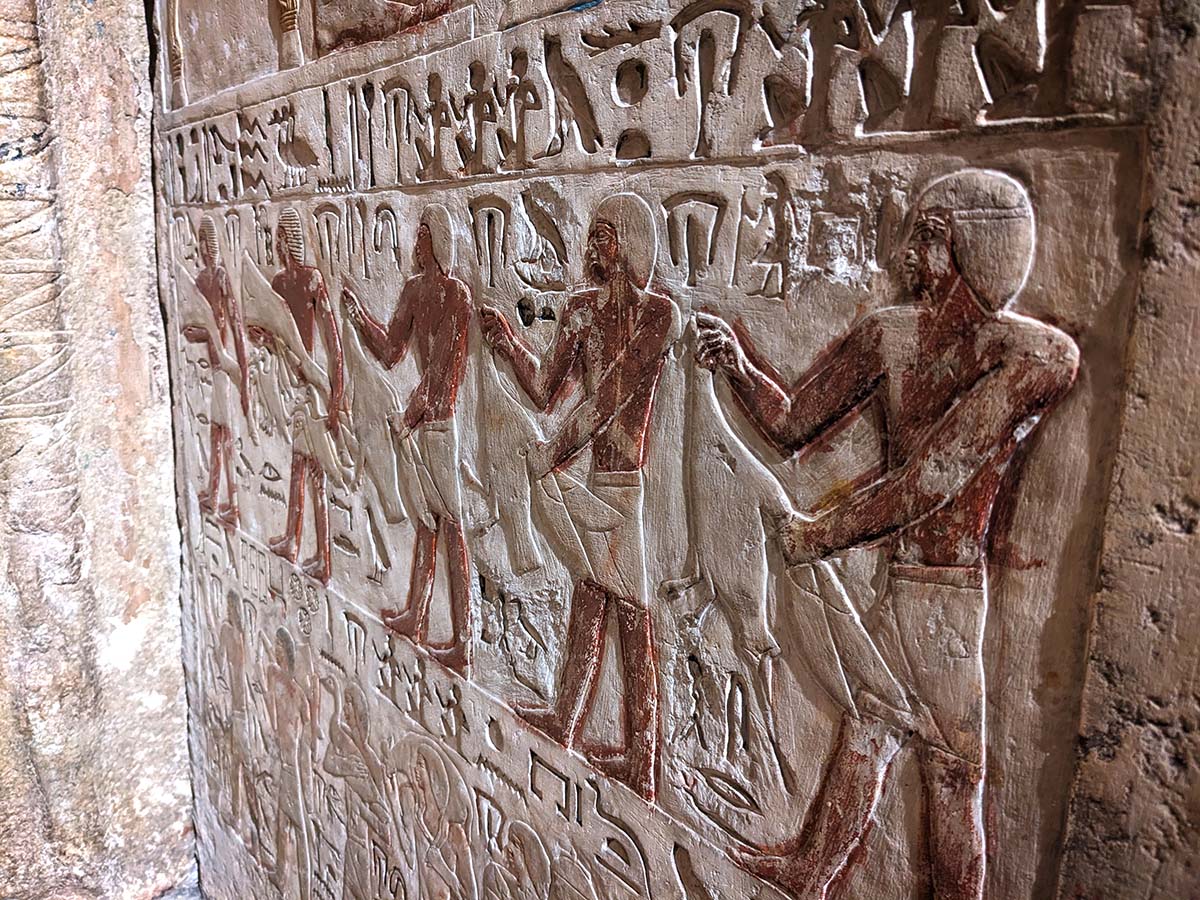
Carvings displayed in the Egyptian Museum
All mummied out, we returned to our hotel for a bit of rest after our busy day. For dinner, the group reconvened at a nearby restaurant that clearly caters to tourists but nonetheless offered some authentic Egyptian dishes. I opted for molokhia, an Egyptian green soup that tastes like herbal chicken broth but has the consistency of mucus. My groupmates were understandably disturbed by my meal’s texture, but I have to say: it was pretty darn delicious. Over lively dinner conversation, our group got to know each other better, excited to spend the next week and a half together.
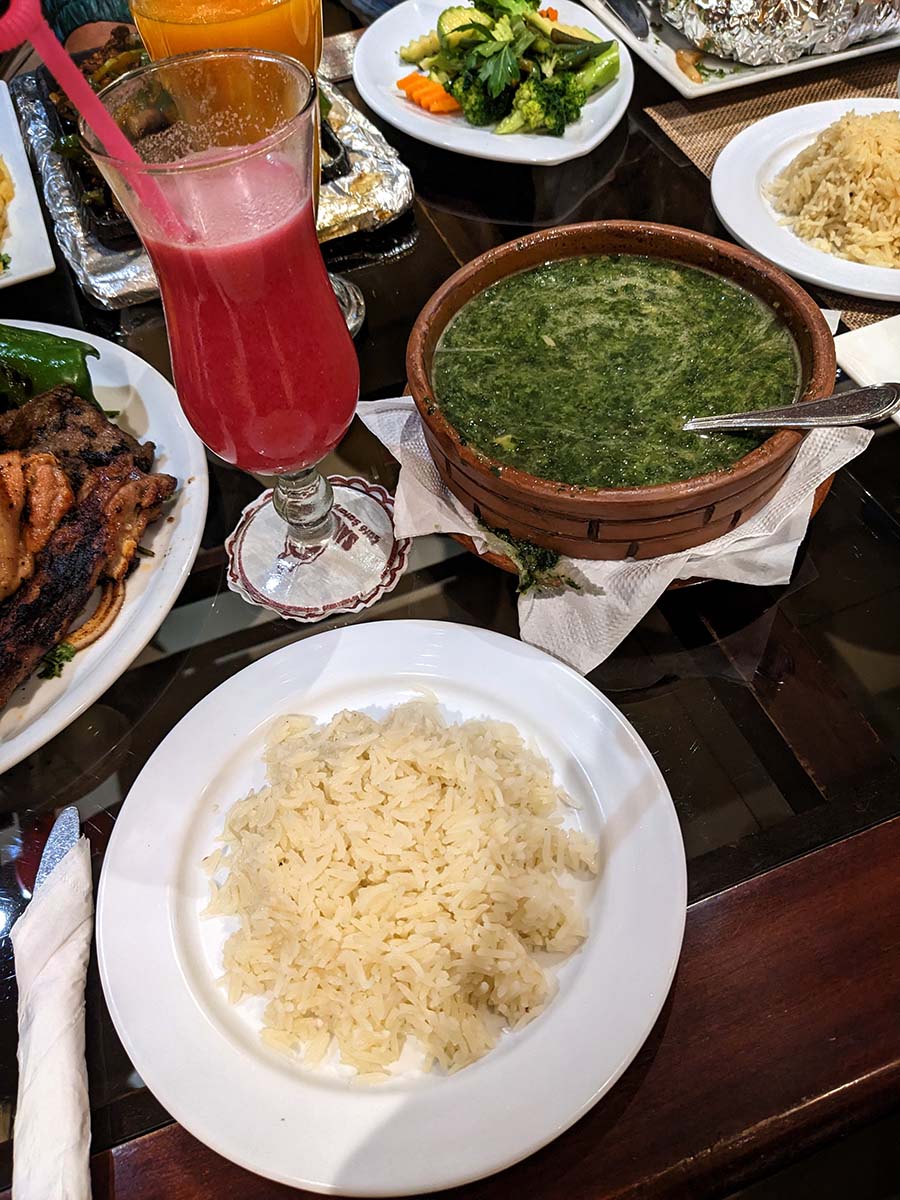
Molokhia!
Exhausted from our action-packed day, I went to bed early, ready for our early departure from Cairo the next morning. Alexandria was calling our names!





You hit another one out of the park, Kirstie. Fascinating!!!
Thank you! It’s been fun revisiting the trip through these posts!